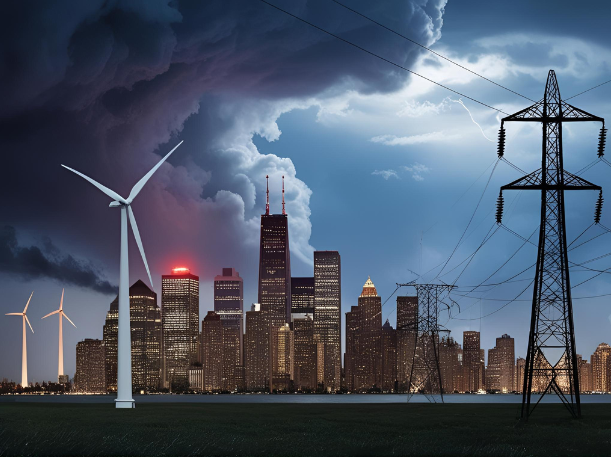“The energy and critical minerals (“energy”) identification, leasing, development, production, transportation, refining, and generation capacity of the United States are all far too inadequate to meet our Nation’s needs. We need a reliable, diversified, and affordable supply of energy to drive our Nation’s manufacturing, transportation, agriculture, and defense industries, and to sustain the basics of modern life and military preparedness”.

So reads the opening paragraph of the National Energy Emergency declared by the White House on January 20, 2025. It is true that U.S. energy consumption has increased steadily since 1974. In the six months beginning in January 2024, U.S. energy consumption was almost a third greater than the same six month period in 1974. We’re also looking toward a significant growth in energy demand in the future as data centers come online and the trend toward electrification ramps up.
However, U.S. energy production has increased faster than energy consumption over the past 50 years. The United States is the world’s leading producer of oil and gas—and a leading exporter too. We export more oil than Saudi Arabia, Russia, Ecuador, Venezuela, and every other country in the world. In recent years, the U.S. has also become the largest exporter of liquified natural gas (LNG), meaning the country is producing so much gas that we’re shipping huge amounts of it to European and Asian countries.
The administration’s goal of increasing energy production is a chimera in the face of the glut of available domestic sources; the oil industry can decide to produce more oil whenever it wants. There are already more than 9,000 approved drilling permits waiting to be used on federal lands. Nearly 5,000 of those permits were approved in 2021 alone. If we want more fossil fuels, we already have them.
But it’s important to note that if we were in a national energy emergency, it makes no sense to exclude the fastest growing energy sectors. Yet that’s just what this executive order does. Tyler Norris, former special advisor to the US Energy Department was quoted in Fast Company as saying “If you’re declaring a national energy emergency, presumably you’re attempting to find and maximize available resources wherever possible, and right now the fastest growing resources in the country are solar, wind, and battery storage.”
More oil on the world market will never solve the issues of oil price volatility or achieve real energy independence. The global fossil fuel market is critically affected by conflicts around the world, which keeps energy prices high. Issuing more drilling permits on federal lands around the country even beyond current historically high levels won’t change that. The only real solution for energy independence and lower energy prices (not to mention our own health and the health of the planet), is greater investment in clean, renewable energy.
Most of the large-scale electricity capacity the nation added in 2024 came from solar (60 percent), wind power (10 percent), and battery storage supporting renewable energy (23 percent). The U.S. Energy Information Administration expects renewable generation to grow exponentially over the coming years.
Currently, according to the U.S. Department of Energy’s Offshore Wind Market Report, the U.S. offshore wind energy industry has a total of almost 53 gigawatts of potential generating capacity in the development and operational pipeline, with 174 megawatts operational now. The Department of Energy estimates that at least 112 gigawatts will be operational by 2050. In other words, about a quarter of US annual electricity use could be met by offshore wind alone.
What our country needs to support the growing needs for electricity is not more fossil fuel generation. What we need is a national strategy to expand renewable sources of electricity, and the infrastructure needed for the grid to meet the growing energy load, utilizing available technologies like virtual power plants, enhanced transmission technologies, microgrids, and increased efficiency through industrial process optimization, smart grids and energy-efficient technologies.
Not only does binding the US energy future to the dead end path of fossil fuels exacerbate climate change and the environment, it also diverts the US from the alternative road in which our economic engine could lead the world in developing clean technologies like solar panels, wind turbines, and battery technology. The real “energy emergency” is that we’ve ceded that path to countries like China, while we fall behind as a competitor.
References:
- No, We’re Not in an Emergency Energy Crisis
- U.S. energy production has increased faster than energy consumption over the past 50 years
- Declaring a National Energy Emergency
- 5 Reasons Why the United States Can’t Drill Its Way to Energy Independence
- Trump Claims There’s an Energy Emergency. He’s Wrong.
- Offshore Wind Energy